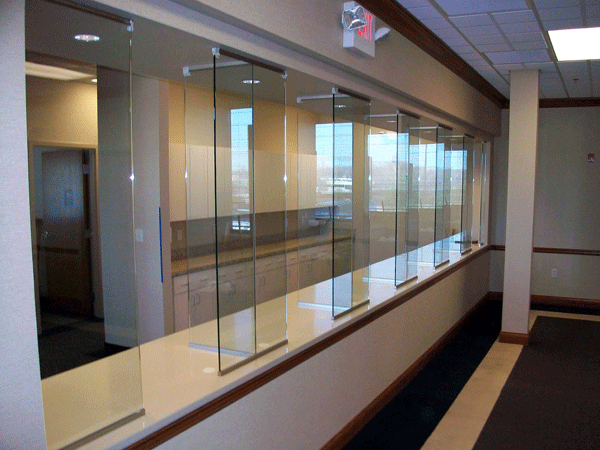Glass
What is glass ? It is typically about 50% sand (a very high quality silica sand), 15% soda ash, 15% dolomite, 4% limestone, 1% sodium sulphate and 15% cullet. The cullet is recycled, broken or raw glass that is added to the batch so that the raw materials will melt more easily.
There are many different types of glass and an infinite number of uses for it. We handle all manner of projects. It can be as small as a piece of non-glare glass for a picture frame, or as large as the installation of a glass and aluminum curtain wall office building project.
Glass Industry Quality Standards
Standard Tolerances - Glass Industry accepted tolerances for glass size are plus or minus half the thickness of the glass. For example ¼" thick glass has a tolerance of 1/8" meaning that a 24" dimension can actually be from 23 7/8" to 24 1/8" long and be acceptable by industry standards. Where more precise measurements are critical, "Zero Tolerance" may be available for an additional charge, but you must specify "Zero Tolerance" when you place the order. Zero Tolerance measurements will hold a maximum size at plus 0" and minus 1/8".
Acceptable Glass Defects - All glass contains various types of flaws or blemishes, and when fabricated, the glass will most likely have hairline and light scratches, and other imperfections that may be noticeable at close range. Glass industry quality standards define "acceptable defects" as those defects that are not visible when the glass is viewed in a vertical position from 11 feet away under normal lighting. If the defect, scratch, etc. is not visible from that distance our manufacturers will not replace the glass, and hence we can not replace the glass for free.
Our care and concern dictates that you are made aware of these potential problems when working with glass products.



